Smartphones & Tablets | July 10, 2023
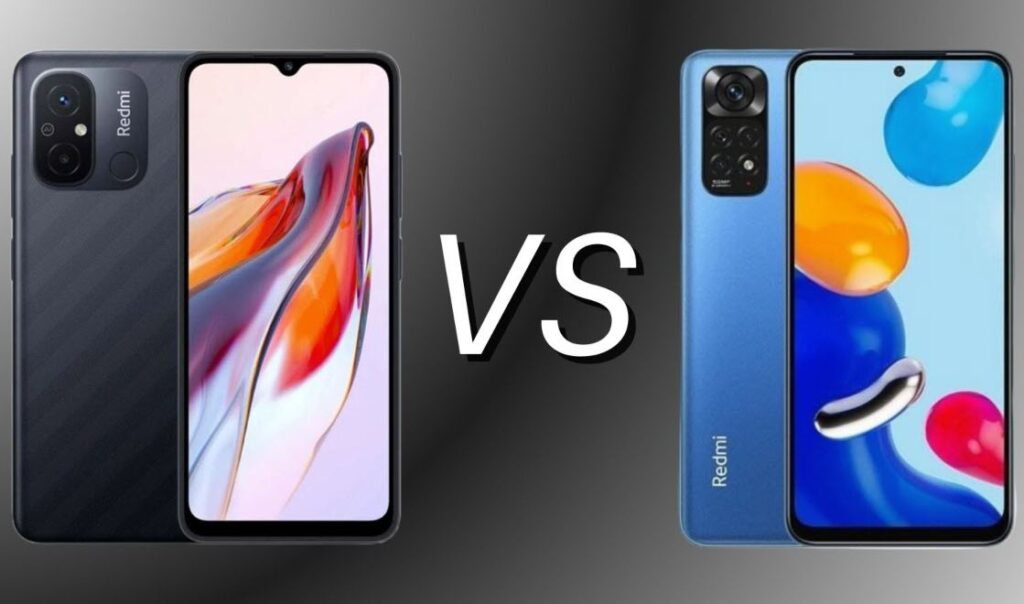
| Xiaomi Redmi 12C | Xiaomi Redmi Note 11 | |
| Screen | 6.71 inches of IPS LCD technology, 20.6: 9 aspect ratio, HD+ resolution of 1,650 x 720 pixels, 60 Hz refresh rate, 240 Hz touch sampling rate, 500 nits maximum brightness and unspecified resistant glass | 6.43 inches of AMOLED technology, 20: 9 format, FullHD + resolution of 2,400 x 1,080 pixels, 90 Hz refresh rate, 240 Hz touch sampling rate, maximum brightness of 1,000 nits and Corning Gorilla Glass 3 glass |
| Main chamber | – 50 megapixel main sensor with f/1.8 focal aperture with FullHD 1080p video recording capability at 30 frames per second – Secondary sensor with QVGA bokeh lens | – 50-megapixel main sensor with f/1.8 focal aperture with video recording capability in FullHD 1080p resolution at 30 frames per second – Secondary sensor with 8-megapixel wide-angle lens with f/2.2 focal aperture – Tertiary sensor with 3.5-inch macro lens 2 megapixels with f/2.4 focal aperture – 2 megapixel quaternary depth sensor with f/2.4 focal aperture |
| Selfie camera | 5-megapixel main sensor with f/2.2 aperture and FullHD 1080p video recording capability at 30 frames per second | 13-megapixel main sensor with f/2.4 focal aperture and video recording capability in FullHD 1080p resolution at 30 frames per second |
| Internal memory | 32, 64 or 128 GB eMMC 5.1 | 64 or 128 GB UFS 2.2 |
| Extension | Available via microSD card | Available via microSD card |
| Processor and RAM | – Mediatek Helio G85 of 12 nanometers and eight cores at 2.0 GHz max. – 3 or 4 GB of LPDDR4 type RAM | – Qualcomm Snapdragon 680 6 nanometer eight-core 2.4 GHz max. – 4 or 6 GB of LPDDR4 type RAM |
| Battery | 5,000 mAh with support for 10W fast wired charging (charger included in the box) | 5,000 mAh with support for 33W fast wired charging (charger included in the box) |
| OS | Android 12 under MIUI 13 | Android 13 under MIUI 14 |
| Connections | 4G LTE, Wi-Fi 802.11 a/b/g/n/ac dual-band, Bluetooth 5.1, GPS with A-GPS and GLONASS, NFC for contactless payments, FM radio, microUSB input and 3.5 mm jack for headphones | 4G LTE, Wi-Fi 802.11 a/b/g/n/ac dual-band, Bluetooth 5.0, GPS + GLONASS, NFC for contactless payments, USB Type-C input and 3.5-mm headphone jack |
| SIM | Dual nano SIM | Dual nano SIM |
| Design | Colors: Yellow, Grey, White and Blue | Colors: black, white and blue |
| Dimensions and Weight | 168.7 x 76.4 x 8.8 millimeters and 192 grams | 159.9 x 73.9 x 8.1 millimeters and 179 grams |
| Featured Features | Rear fingerprint sensor and facial recognition | Side-mounted fingerprint sensor, facial recognition, stereo speakers, infrared sensor for control of external devices, and IP53 dust and water resistance (splash proof) |
| Release date | Available | Available |
| Price | from 100 euro | from 150 euros |
The Xiaomi Redmi 12C is a budget mobile phone that we have analyzed on several occasions. To see how good it is and whether it’s worth it in 2023, we recently compared it to the Redmi 12 and Redmi Note 12, two of the newest mid-range devices in the segment. Now, let’s see how it fares against the Xiaomi Redmi Note 11, a device from the previous generation that continues to be one of the most interesting value-for-money smartphones today. So, to determine which one is better and why, we will analyze their features, prices, and differences in this comparison of the Xiaomi Redmi 12C vs Redmi Note 11. Who will win? Let’s find out.
The prices mentioned in the article may vary over time, so at tuexperto.com, we limit ourselves to analyzing the differences as of the publication date.
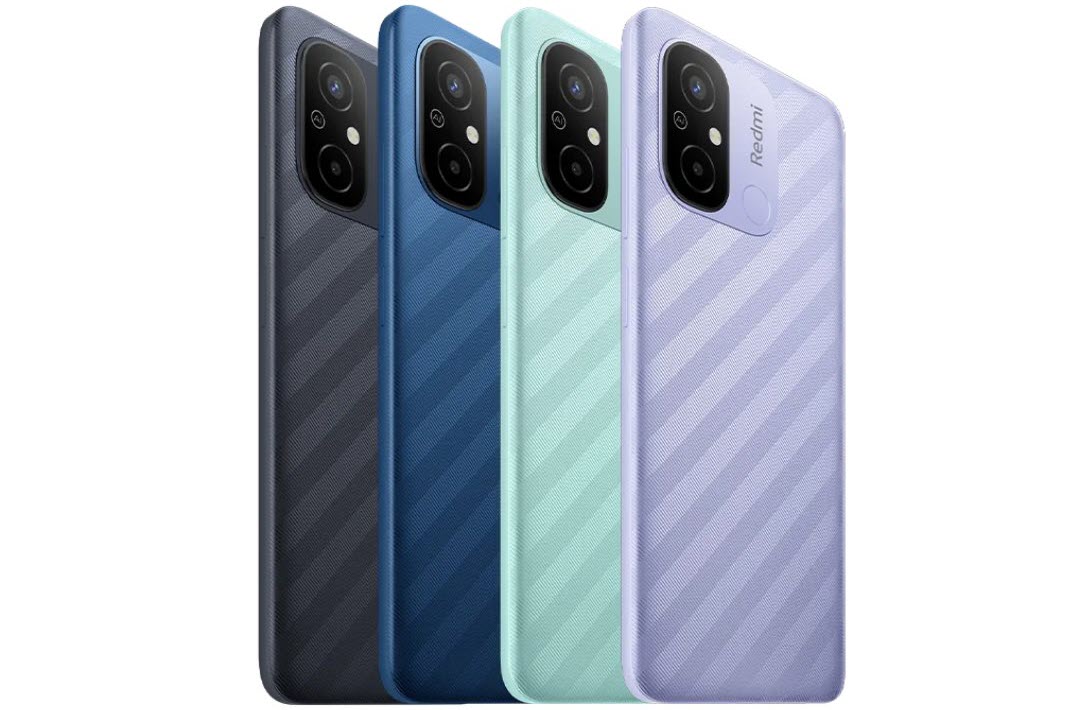
The Xiaomi Redmi 12C and Redmi Note 11 have completely different designs. The former features a notch display in the shape of a “V,” which is mostly seen in cheap entry-level mobile phones. It also has a dual rear camera module located near the fingerprint reader and the Redmi logo. Additionally, its edges are curved.
In the case of the Xiaomi Redmi Note 11, it has a display with a punch-hole for the front camera, which is typical in the majority of mid-range and high-end mobile phones nowadays. It also has a quad-camera setup on the back, and similar to the Redmi 12C, its edges are curved.
Regarding the materials and construction of both devices, polycarbonate (plastic) takes the spotlight. However, the rear finish differs between them: the Xiaomi Redmi 12C has a textured back with a diagonal line pattern, while the Redmi Note 11 has a smooth back with a reflective treatment that makes it more eye-catching. Moreover, the Redmi Note 11 is smaller, more compact, thinner, and lighter than the Redmi 12C, making it more comfortable to use with one hand.
But the differences between the Xiaomi Redmi 12C and Redmi Note 11 don’t end there… they have just begun, and in terms of displays, we find some of the most significant distinctions.
Firstly, the Xiaomi Redmi 12C has a much larger display than the Redmi Note 11, measuring 6.71 inches compared to the latter’s 6.43 inches. However, in terms of specifications, the Redmi 12C’s display is inferior. The Redmi Note 11, on the other hand, features an AMOLED display with a higher resolution of Full HD+ (2,400 x 1,080 pixels). In contrast, the Redmi 12C has an IPS LCD display with a lower resolution of HD+ (1,650 x 720 pixels). This means that the Redmi Note 11’s panel not only displays more vibrant colors and deeper blacks but also offers better image definition.
Furthermore, the Xiaomi Redmi Note 11 has a higher refresh rate of 90 Hz, making it smoother than the Redmi 12C, which sticks to 60 Hz. However, both displays have the same touch sampling rate of 240 Hz. When it comes to brightness intensity, the Redmi Note 11 wins again, as it achieves a maximum brightness of 1,000 nits, while the Redmi 12C only reaches 500 nits.
In terms of protection, both devices are coated with durable glass, but there is no clear winner in this aspect since Xiaomi did not disclose the specific glass used in the Redmi 12C. However, it is assumed that it is less resistant than the Corning Gorilla Glass 3 found in the Redmi Note 11.
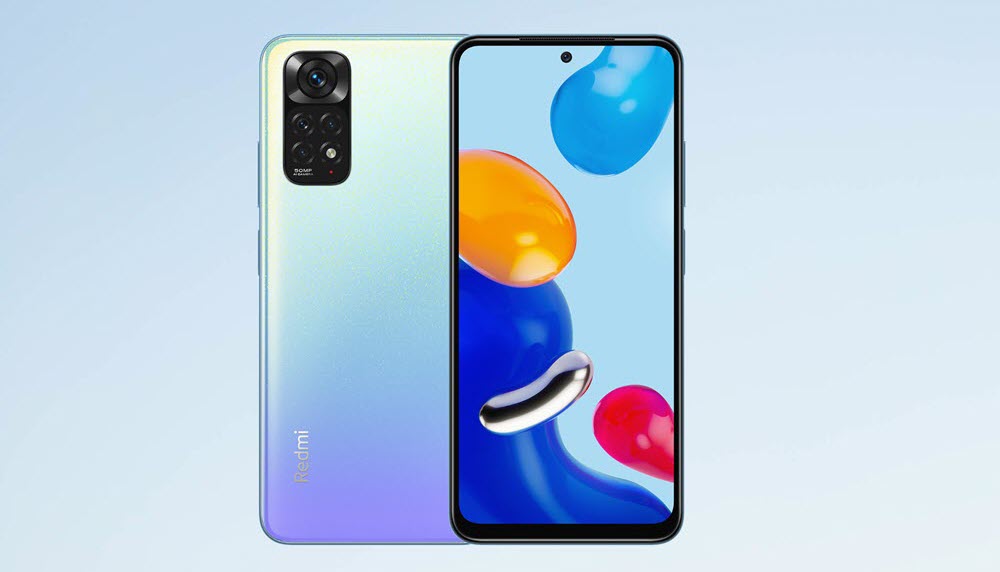
Both devices are not the most powerful ones you can buy in 2023, not by a long shot, but they fulfill most everyday uses. They are perfect for day-to-day tasks and running applications and games that are not very demanding in terms of graphics and resources. However, they may be somewhat limited when it comes to more demanding and resource-intensive applications, especially the Xiaomi Redmi 12C, which has a less powerful and efficient processor compared to the Redmi Note 11.
The Xiaomi Redmi 12C is equipped with the MediaTek Helio G85 processor, a modest 12-nanometer chipset with an octa-core configuration that operates at a maximum clock frequency of 2.0 GHz. On the other hand, the Redmi Note 11 features a Qualcomm Snapdragon 680 processor. It is built on a 6-nanometer node and boasts an octa-core configuration with a maximum clock frequency of 2.4 GHz.
But the Xiaomi Redmi Note 11 not only achieves better performance than the Redmi 12C due to its processor but also due to the type of internal memory it carries. It has UFS 2.2 storage available in options of 64 GB and 128 GB. On the other hand, the Redmi 12C has eMMC 5.1 storage, which has a lower read and write speed. The Redmi 12C is available in variants of 32 GB, 64 GB, and 128 GB. Fortunately, both devices support expandable internal storage via a microSD card. As for RAM, both devices have LPDDR4 RAM, with the Redmi 12C having 3 or 4 GB and the Redmi Note 11 having 4 or 6 GB.
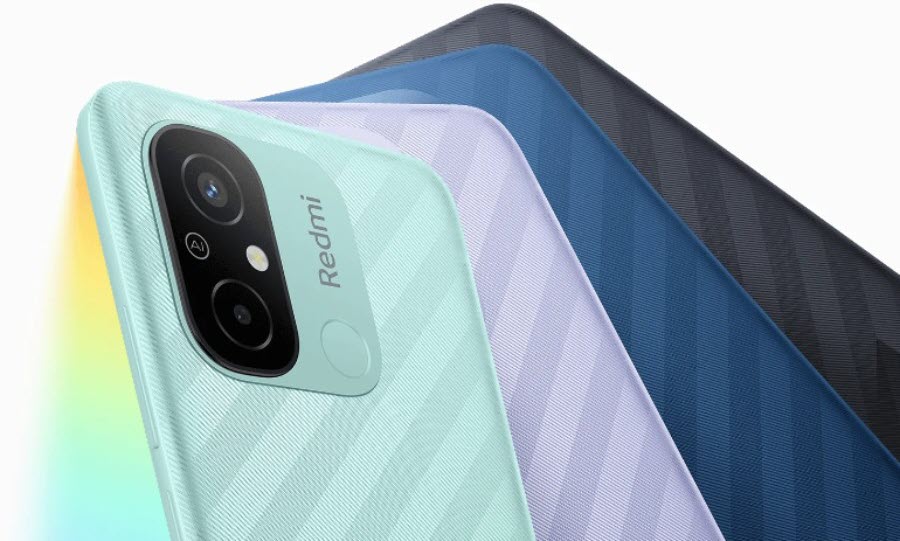
Moving on to the camera section in the Xiaomi Redmi Note 11 vs Redmi 12C comparison, we find more differences between the two devices.
The Xiaomi Redmi Note 11, as mentioned earlier, features a quad-camera module. It consists of a 50-megapixel primary sensor with an aperture of f/1.8, an 8-megapixel wide-angle lens with an aperture of f/2.2, and two 2-megapixel lenses for macro and bokeh with an aperture of f/2.4 each.
On the other hand, the Xiaomi Redmi 12C has a dual camera setup that also includes a 50-megapixel primary sensor with an aperture of f/1.8. Its secondary camera is a QVGA resolution bokeh sensor that helps achieve a more precise depth-of-field effect.
In terms of selfie cameras, the Redmi Note 11 features a 13-megapixel front camera with an aperture of f/2.4, while the Redmi 12C has a 5-megapixel front camera with an aperture of f/2.2.
Regarding video recording, there are no differences between the Xiaomi Redmi 12C and Redmi Note 11, as both can record in Full HD 1080p at 30 frames per second with both the main and front cameras.
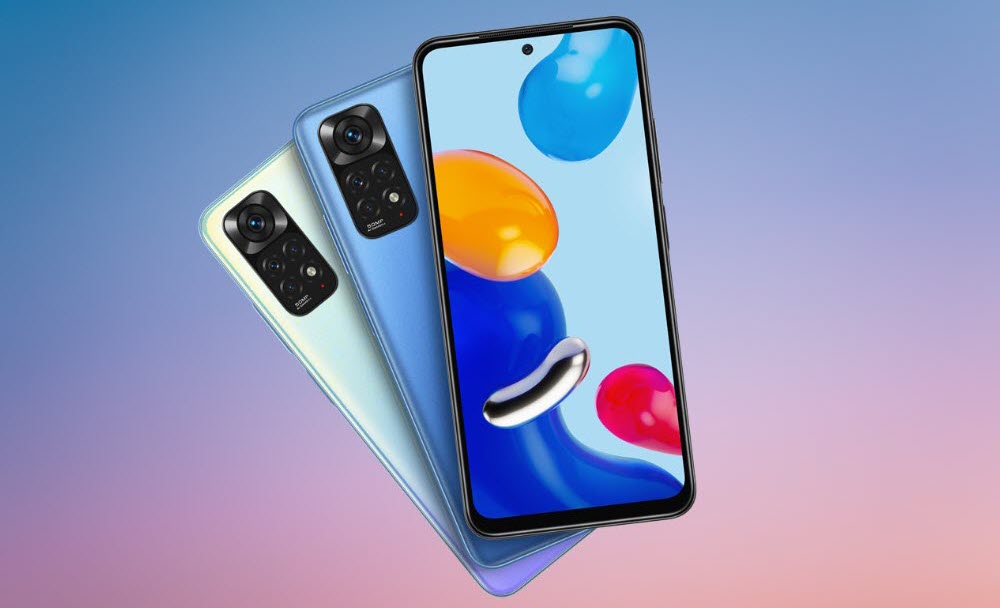
Moving on to the topic of batteries, both devices have a capacity of 5,000 mAh, providing similar battery life. However, the Xiaomi Redmi Note 11 supports 33W fast charging, while the Redmi 12C is compatible with a lower-power 10W charging. As a result, the Redmi Note 11 takes just under an hour to fully charge, while the Redmi 12C takes approximately an hour and a half. Both devices include their original charger in the box, but the Redmi 12C has a microUSB port, while the Redmi Note 11 has a USB Type-C port.
In terms of connectivity, both devices feature 4G LTE, dual-band Wi-Fi 5, GPS with A-GPS and Glonass, support for dual SIM cards, NFC for contactless mobile payments, and a 3.5mm headphone jack. They also have Bluetooth, but the Redmi 12C has version 5.1, while the Redmi Note 11 has version 5.0. However, something that only the Redmi Note 11 has is an infrared sensor, which allows it to act as a remote control for controlling televisions, air conditioners, and other home devices.
As for other features, both devices come with a physical fingerprint reader, but as mentioned earlier, the Redmi 12C’s fingerprint reader is located on the back, while the Redmi Note 11’s is on the side. Only the Redmi Note 11 has dual stereo speakers and IP53 water resistance, which protects it against dust and splashes. However, the Redmi 12C boasts an FM radio feature. In terms of software, the Redmi Note 11 runs on Android 12 with MIUI 13, while the Redmi 12C runs on Android 13 with MIUI 14 as of today. The Redmi 12C will also receive the Android 13 update with MIUI 14 at some point.
We have now reviewed all the features and differences between the Xiaomi Redmi Note 11 and Redmi 12C, so let’s take a look at their prices and determine the winner of this comparison.
The Xiaomi Redmi 12C has a starting price of around 90 euros in the current market, while the Redmi Note 11 can be purchased in 2023 for around 150 euros and above. This leaves us with a difference of about 60 euros between the two, with the Redmi Note 11 being the more expensive option.
With this in mind, we can say that the better phone in this Xiaomi Redmi Note 11 vs Redmi 12C comparison is, as expected, the Redmi Note 11, and we will now explain why…
The Xiaomi Redmi Note 11 surpasses the Redmi 12C in almost every aspect. Its display, despite being smaller, has better technology, a higher refresh rate, and is much brighter, just to mention a few advantages. Additionally, it offers better performance, not only due to a faster and more efficient processor but also because of its more advanced internal memory. Its cameras are also more complete, as they include a wide-angle lens and a macro sensor. Moreover, it has a higher resolution front camera.
What about the battery? Well, it has the same size as the Redmi 12C’s battery but supports much faster charging. However, in terms of connectivity, it falls short compared to the Redmi 12C due to the absence of an FM radio and having a less advanced Bluetooth version. Nonetheless, it does feature a USB Type-C port, which is better than a microUSB.
Furthermore, the Redmi Note 11 excels in other secondary features such as dual stereo speakers, an infrared sensor, and IP53 water resistance, which are not present in the Xiaomi Redmi 12C. Additionally, its fingerprint reader is located in a more convenient position (on the side), and its overall design is more attractive. With all of this said, it is clear why the Redmi Note 11 is better than the Redmi 12C, despite being more expensive.